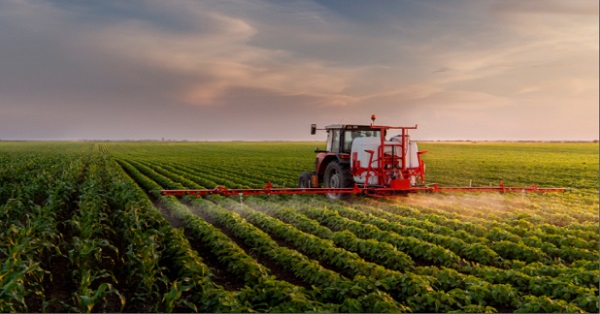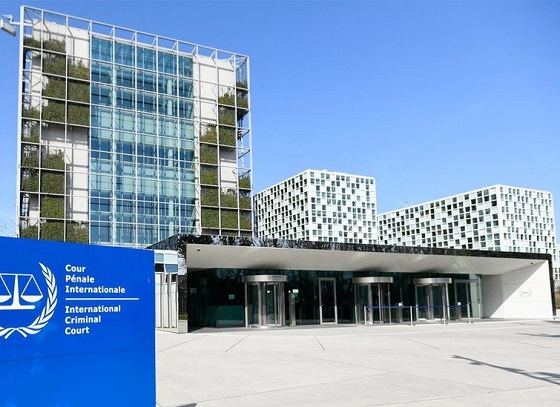Also Interesting
Live Casino Vs. Traditional Online Casino: Comparing the Benefits and Differences

Gambling has been around since ancient times, and the first gambling house (Ridotto) emerged in 1638 in Italy. Since then, there have been numerous advancements in the way we gamble.
Due to the rapid evolution in technology, players now have two ways to play games from the comfort of their own homes: live casinos and traditional online casinos.
In this article, we will explore what a traditional online casino is, what a live casino is, and the differences between the two. Keep reading until the end, as we will also discuss the benefits and drawbacks of each option. Let’s get started!
What Is a Live Casino?
Due to its ability to provide an interactive experience, live casinos continue to gain popularity. They feature real dealers and players that you can interact with in real-time, recreating the feeling of playing at a brick-and-mortar casino.
You can stream and play a variety of live casino Bitcoin games, including roulette, blackjack, poker, and more. The graphics are realistic, and the chat features allow players to communicate with others and the dealer.
What Is a Traditional Online Casino?
Traditional online casinos are virtual platforms where you can play slots or bet on digital versions of classic card games, such as roulette or blackjack.
Players can either play against other online users or a computer bot. However, it’s important to note that there are no dealers present at traditional online casinos, which may affect the interactive experience.
Many developers create fantastic games for traditional online casinos, featuring great animations, graphics, and soundtracks. This compensates for the lack of interactive experience.
What Is the Key Difference Between a Traditional Online Casino and a Live Casino?
The key difference between a traditional online and a live casino is that the former does not offer an interactive experience as the latter does.
In a live casino, you can interact with other players and dealers through the chat feature and stream the game in real time, resulting in a more immersive experience. There are other differences that we will discuss in detail in the next section.
What Are the Benefits and Drawbacks of Traditional Online Casinos?
Here are some of the benefits and drawbacks of playing games at a traditional online casino:
It Is Convenient
One major benefit is the convenience that traditional online casinos offer. You can visit any one of them from the comfort of your home or while you’re traveling.
Most traditional online casinos have mobile-friendly applications, which makes the experience even more enjoyable.
It Offers Better Bonuses
Since traditional online casinos have lower overheads compared to land-based operators, they can offer better bonuses and promotions to attract more players.
These may include welcome bonuses, no-deposit bonuses, free spins, multiplier rewards, loyalty points, and many more.
There Is a Lot of Variety
Compared to land-based operators, traditional online casinos spoil you with variety. There are many options to choose from, and all of the games have something unique to offer, resulting in a more enjoyable experience.
It Lacks Social Interaction
Although traditional online casinos are convenient, offer bonuses, and have a variety of games, they lack the social interaction that some players may crave.
If you prefer not to interact with real people or are shy, you may enjoy playing games at a traditional online casino. However, if you thrive around human interaction, you may want to consider a live casino or a land-based operator.
You Might End Up Losing Money
With so many different games available to play, stunning graphics, and catchy tunes, it can be challenging to keep track of your spending at a traditional online casino.
If you don’t set a budget or maintain limits, you might end up losing a lot of money.
What Are the Benefits and Drawbacks of Live Casinos?
Similar to how cryptocurrencies are changing the landscape of sports betting, live casinos are revolutionizing the way people gamble from the comforts of their homes.
Here are the key benefits and drawbacks of playing games at a live casino:
It Is an Interactive Experience
Live casinos provide a relatively new form of online gaming. Real dealers dealing with the cards in real time and interacting with other players at the table adds a social aspect to the game, making it exciting and fun.
There Is More Authenticity to It
While traditional online casinos use a random number generator to deal cards, it may raise suspicion of a rigged system among players.
With live casinos, you have real dealers who handle the cards, giving the game more authenticity. If you’re used to playing at traditional brick-and-mortar casinos, you’ll definitely appreciate this experience.
You Will Need Good Equipment
A live casino requires a webcam and a high-speed internet connection for streaming the gaming session. Having the right equipment is important if you want to have a seamless experience.
You Must Follow Casino Etiquette
When playing a card game at a traditional casino, the establishment requires you to follow certain rules. You must always be polite and respectful to the other players and the dealer and avoid using offensive language or yelling. This also applies to live casinos.
The strict adherence to rules might discourage some players from playing games, as they would rather stick to traditional online casinos where there are no etiquette requirements.
Final Thoughts – Which Casino Is Better?
There is no real winner when comparing a live casino with a traditional online casino because it’s like comparing apples with oranges. It all boils down to your personal preference.
Some players enjoy the authenticity of a live casino and the environment it creates as a real dealer handles the cards in real time.
On the other hand, there are others who prefer traditional online casinos, as they might like to game at their own pace while remaining anonymous.
There are many demo games that you can try online or gameplay videos that you can watch to get an idea of the experience at these two different types of casinos. Remember, it’s all about having a good time, so gamble responsibly!
Also Interesting
Understanding Slot RTP and Variance: Which Slot Game Is Right for You?

When it comes to playing slots, luck plays a huge role, but there’s more to winning than just spinning the wheels. Checking the variance and RTP of a slot game beforehand can help you find one that matches your style and strategy. Whether you’re a casual player or chasing a jackpot, understanding these factors can improve your experience. For Canadian players looking to try their luck, Tenexcasino.com is a top choice among crypto casino sites, offering a great platform to explore these games.
What is RTP?
RTP or Return to Player shows how much of the money you bet goes back to you over time. It also shows you the “house edge,” or how much of your money goes to the casino over the same period. If a slot has an RTP of 90%, 90 cents of every dollar you bet goes back to you. The remaining 10 cents is the “house edge” or the profit the casino will likely make.
RTP is measured over time and doesn’t tell you what will happen with each spin. But it can tell you which slot games to pick if you want to minimize risk.
What Is Slot Variance?
Variance also shows the risk of playing each slot game. But unlike RTP, it determines how often you can expect to win and the average size of each payout. Will you see small, frequent wins or rare but potentially huge payouts?
Depending on your preference and budget, you can opt for low, medium, or high-variance slots. Low-variance slots offer frequent but smaller payouts, medium-variance slots provide a mix of frequent smaller wins and occasional bigger winnings, and high-variance slots give rare but significant payouts.
What’s the Right Type of Right Slot Game for Me?
Variance and RTP can help you select the slot games that suit your style and the risk you’re
willing to take.
High RTP Slot Games
High RTP games are an ideal choice if you’re on a small budget. They will give you the best chance to build your bankroll and get more from your investment. You should look for games with at least 97% RTP, like Mega Joker (99%), Codex of Fortune (98%), and Starmania (97.87%).
While these games ensure you get more of your money back in the long term, they won’t necessarily help you maintain your bankroll. If that’s what you’re looking for, you should ensure the slots also have low variance.
Low Variance Slots
Low-variance slots are a perfect choice if you’re looking for steady gameplay with minimal risk. They allow you to play longer without large swings in your balance. But it’s not without its thrill.
If you like frequent wins, these games certainly keep the excitement alive. Some of our favorite low-variance games are Starburst, Jack Hammer, and Blood Suckers.
Medium-Variance Slots
These are a sweet spot. Medium-variance slots are perfect if you want steady payouts with the occasional thrill of big wins. They allow you to avoid the risk of high-variance slots while enjoying some of the excitement. Temple of Iris, Wolf Gold, and Golden Winner are great medium-variance slots worth checking out.
High-variance Slots
High-variance games are your best bet if you dream of hitting the jackpot. The risk is undoubtedly high, but you can win a massive payout. However, these slots may not be the best choice for prolonged gaming sessions. They can, however, provide convenient and enjoyable entertainment when traveling or during your lunch breaks.
High variance slots often include progressive jackpots. Some of our favorite high-variance slots include Rome: The Golden Age, Twin Spin Megaways, and Jack in a Pot.
Having a healthy bankroll is necessary here. But even more so, you need patience. You may go through several spins without a win, but the payout can be significant when you do win.
Also Interesting
The Role of Satellite Imagery in Developing VRA Prescription Maps

Since its appearance in the 1980s, precision agriculture has revolutionized farming, offering innovative solutions to age-old challenges. One of those is Variable rate technology (VRT), which plays a key role in improving efficiency and sustainability in today’s farming methods.
By applying inputs like fertilizers and water in different quantities across the field, VRT helps optimize crop yields and reduce costs. This technology relies on data collection and analysis to create detailed VRA prescription maps, allowing for customized input applications.
With the right equipment and technology, VRT can significantly improve agricultural productivity. Today’s advanced tractors, equipped with built-in terminals and specialized software integrated with a precision agriculture platform, use prescription maps to accurately apply variable rates of water or chemicals based on GPS location and management zones.
Variable Rate Technology In Precision Agriculture
Precision agriculture is a game-changer, moving far beyond traditional farming methods. Often called satellite farming, this approach focuses on crop condition monitoring, measuring, and responding to variability within fields. One of its standout innovations is variable rate application (VRA), which has caught the attention of farmers worldwide for its immense potential.
Why is VRA so important? It goes beyond simply fertilizing, seeding, and applying pesticides. It’s about utilizing technology to apply various expendable materials on and beneath the field automatically.
Farm management software simplifies contemporary farming by combining data and technology to improve farming efficiency, sustainability, and profitability. Precision agriculture platforms consolidate operations, crop health monitoring through satellite imagery, and offer real-time suggestions, enabling farmers to make informed decisions for the best use of resources (through VRA) and increased productivity.
Variable rate application offers numerous advantages for modern agriculture:
- VR fertilizer enhances farming efficiency.
Adjusting rates based on soil health and plant needs helps save resources and increase yields. Research shows this method can lead to higher net income and healthier soil compared to using uniform rates: “The net incomes of VR management zone were 15.5–449.61 USD ha−1 higher than that of traditional spatially uniform rate fertilization.”
- VR irrigation saves water, time, and fuel while reducing machinery wear.
Applying the correct amount of water to different parts of the field based on soil moisture levels and crop requirements reduces wear and tear on irrigation equipment compared to uniform irrigation.
Studies claim: “Variable rate irrigation (VRI) can increase water use efficiency and productivity by applying water based on site‐specific needs.”
- VR seeding increases crop yield by adjusting seeding rates based on soil fertility.
VR seeding adjusts seeding rates based on soil fertility and other factors to optimize plant populations and yields. It is commonly used alongside variable rate fertilization as part of a comprehensive precision agriculture strategy.
Findings show that: “The application of VRS to the seeding of various crops shows positive agro-economic trends, additional yields, and higher economic returns.”
- VR pesticide reduces environmental pollution and improves pesticide efficiency.
VRT helps farmers target pests more accurately and use less pesticide.
Studies have found that “VR management zone reduced the use of nitrogen (N), phosphorus (P), and potassium (K) fertilizers by 22.90–43.95%, 59.11–100%, and 8.21–100%, respectively, and it also increased the use efficiency of N, P, and K by 12.27–28.71, 89.64–176.85, and 5.48–266.89 kg/kg, respectively, without yield loss.”
This demonstrates the ability of variable rate technologies to improve pesticide effectiveness and reduce environmental pollution in agriculture.
Using Various Technological Means For Informed Decisions
Applying different technological tools is essential for implementing variable rate technology in agriculture. This includes smart machinery, fertilizers, seeders, soil sensors, geographic information system (also called GIS), and the Global Navigation Satellite System (GNSS) applications for field mapping. Additionally, having supporting infrastructure, which helps manage and analyze info from different sources, is crucial for successful implementation.
Understanding the location, timing, and methods for seeding, fertilizing, and harvesting is key in remote crop monitoring and precision agriculture, where data plays a vital role in managing resources effectively.
This information is taken from a wide variety of data sources.
- Sensors. Moisture, soil nutrients, compaction, weather stations (humidity, temperature, wind speed)
- Drones and satellite photography. Field hyperspectral imaging.
- GNSS. Event coordinates, also points and times for obtaining time-series data
- Spatio-temporal data sources. Spatio-temporal specific data (trajectories of agricultural machinery, spatiotemporal points, event points, time-series information)
- Maps. Field boundaries, soil type, surface levels)
- AI solutions. Prediction of weather conditions, detection of plant diseases.
However, simply collecting raw data is not sufficient. It is necessary to process this information to extract valuable insights, make informed decisions, and enable automatic alerts and control signals for agricultural equipment. Thus, you must have the capability to:
- Gather data;
- Transform the data to extract valuable insights for precision farming gear;
- Upload the data into agricultural equipment;
- Retrieve real-time data from tractors, seeders, fertilizers, and other machinery.
By following these steps, farmers can make the most of modern technology, optimizing their farming practices and boosting efficiency.
Use Of Satellite Images In Building VRT Maps
Satellite crop monitoring imagery can be used to generate different kinds of VRA maps for various purposes. As nitrogen is one of the most critical elements plants need, building map for its proper application is a major task.
Nitrogen fertilization maps play a crucial role in optimizing the application of water, nitrogen, and crop protection products.
When creating a VRA map for nitrogen fertilizer, you can choose from various indices that provide valuable insights:
- MSAVI is sensitive to uncovered soil and, therefore, is ideal for planning VR fertilizer application in the early stages of growth.
Example: Early in the growing season, a corn farmer uses MSAVI to detect patches of uncovered soil in their field. This helps them apply fertilizer more accurately, ensuring that nutrient-rich areas receive the right amount of input and promoting uniform growth.
- ReCI measures chlorophyll content in leaves, helping to identify field areas with faded and yellowed vegetation that may need additional fertilizer.
Example: A soybean grower notices using ReCI that certain sections of their field have yellowed leaves, indicating possible nutrient deficiencies. They apply additional fertilizer to these areas, restoring plant health and boosting overall yield.
- NDVI indicates biomass accumulation zones and areas with low vegetation that might demand larger amounts of fertilizer.
Example: A cotton producer uses NDVI to map out zones with varying levels of biomass across their field. They adjust their fertilizer application rates, applying more in areas with lower vegetation to support growth and maximize their harvest.
- NDMI is well-suited for VR irrigation by identifying areas that are under water stress.
Example: During a hot summer, a vineyard uses NDMI to pinpoint areas suffering from water stress. They adjust their irrigation system to provide extra water where it’s needed, ensuring the vines remain healthy and productive.
-
- NDRE helps identify stressed or dying vegetation in the middle to late stages of a season, aiding in effective fertilization strategies.
- Example: During the season, a wheat farmer uses NDRE to identify patches of the field where the wheat plants are showing signs of nutrient stress or poor growth. By applying a mid-season nutrient boost specifically to these stressed areas, the farmer improves the overall health and yield potential of the wheat crop.
Field Productivity Maps
Field productivity maps can be created by analyzing satellite images to pinpoint areas with high or low crop yields. By using the NDVI index and advanced machine learning algorithms, different productivity zones can be identified.
Key applications of productivity maps include:
- Potassium and phosphorus fertilization
Historical productivity zones data can help avoid excessive application in areas where these nutrients may have accumulated with time.
- Variable rate planting
Farmers can apply different seed amounts in various productivity zones to either maximize yield or achieve uniform distribution across the field.
- Land evaluation
Field productivity can be assessed before purchasing or renting land; it helps reduce risk and enhance profitability.
- Targeted soil sampling
Soil sampling efforts can be focused on key areas indicated by productivity data, rather than relying on generic grid sampling.
As you see, variable rate application (VRA) is a cost-effective method that can save you 10% on planting and cultivation costs based on the characteristics of the soil. To fully benefit from VRA, it’s important to understand the technologies involved, such as sensors, GNSS, earth observation pictures from drones and satellites, and digital maps, which provide crucial data for analysis and implementation. We sincerely hope that you succeed in your farming endeavors with modern technology!
______________
Author Vasyl Cherlinka
Vasyl Cherlinka is a Doctor of Biosciences specializing in pedology (soil science), with 30 years of experience in the field. With a degree in agrochemistry, agronomy and soil science, Dr. Cherlinka has been advising on these issues private sector for many years.
-

 Alberta20 hours ago
Alberta20 hours agoProposed $70 billion AI data centre in MD of Greenview could launch an incredible new chapter for western Canadian energy
-

 COVID-192 days ago
COVID-192 days agoAustralian doctor who criticized COVID jabs has his suspension reversed
-

 Business2 days ago
Business2 days agoMassive growth in federal workforce contributes to Ottawa’s red ink
-

 Alberta16 hours ago
Alberta16 hours agoYour towing rights! AMA unveils measures to help fight predatory towing
-

 Frontier Centre for Public Policy2 days ago
Frontier Centre for Public Policy2 days agoFalse Claims, Real Consequences: The ICC Referrals That Damaged Canada’s Reputation
-

 COVID-192 days ago
COVID-192 days agoFormer Trudeau minister faces censure for ‘deliberately lying’ about Emergencies Act invocation
-

 National2 days ago
National2 days agoWhen’s the election? Singh finally commits. Poilievre asks Governor General to step in
-

 Daily Caller2 days ago
Daily Caller2 days agoParty Leaders Exposed For ‘Lying’ About Biden Health



